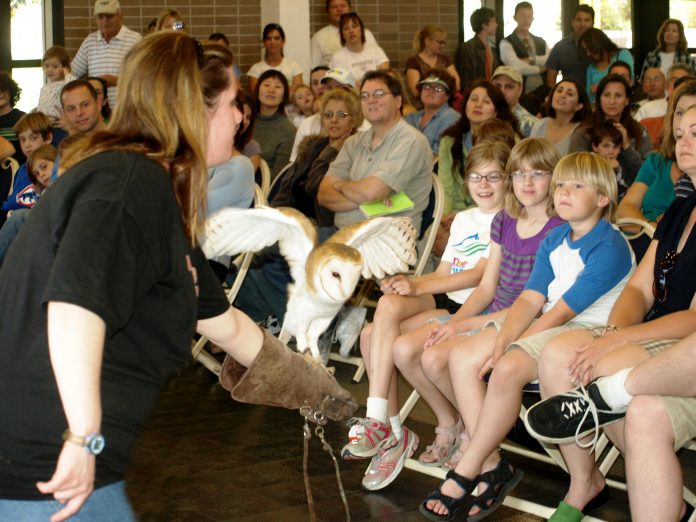For 25 years, the Nature of Wildworks refuge has been located in Topanga, Calif., serving as a home for dozens of wild and sometimes rare animals.
Its owner, Mollie Hogan, wanted to move the refuge mostly due to the increase in fires in that part of the Golden State. As a former Verde Valley resident with family in the area, Hogan hoped to move it to Cornville.
Hogan purchased a parcel of land on Tissaw Road in the hopes of getting a use permit from Yavapai County to open the new refuge there. The refuge in California currently houses about 50 animals, and while most of them are small and easy to move, the refuge includes two mountain lions, four foxes, five horses, four dogs and housecats, as well as a collection of more than 10 birds of prey. Hogan has in the past month begun moving some of the animals to the location.
In February, the Yavapai County Planning & Zoning Commission voted 9-0 in favor of recommending the project for approval by the board of supervisors. After complaints by residents arguing that they had not been sufficiently heard by the county, P&Z re-heard the proposal in September, voting this time 6-3 in favor of approval.
Hogan had agreed to certain stipulations required by the commission.
At the Board of Supervisors meeting on Wednesday, Nov. 18, the board voted 3-2 against approving the use permit. District 4 Supervisor Craig Brown, District 5 Supervisor Mary Mallory and District 3 Supervisor Randy Garrison voted against, with District 1 Supervisor Rowle Simmons and District 2 Supervisor Thomas Thurman — in whose district the wildlife refuge would be — voted in favor of it.
“I understand there are some neighbors that are upset, and if I lived next door I would be concerned,” Thurman said. “However, a parcel this large, and being pretty well available to be a horse ranch … the situation could be much worse than what these folks are doing here. At least they’re being regulated.”
Thurman also argued that the P&Z process had been extensive, and that the BOS should respect the decisions of their fellow county board.
“I believe that this board and any other board should be listening to the people that we have told that we want to volunteer and peruse these hearing items, and both times our planning and zoning commission voted to approve,” Thurman said.
“We have wildlife in that area, but it isn’t taking up residence and hanging out in that area,” Garrison said. “It isn’t there on a long-term basis. That becomes a problem. If you’re in a house that is next to this property, every day you get up and have to worry about whether one of those animals is sitting in your front yard or in your carport.”
“When you get down to the benefit versus the expense of a commercial operation in that neighborhood, I don’t know there is enough benefit at least to the neighbors of this property versus the expense that they’re ultimately going to bear when they go to try sell their property or they have to deal with the day-to-day life that they’re enjoying on their property,” he said.
The board made its decision after hearing input from the public.
Leah Brock, a planner at Yavapai County Development Services, informed the board of the results of a survey of Verde Valley residents, showing 56.41% in favor, out of 558 responses. However, the survey information showed that those in favor of approval were mostly from areas away from the proposed site. The people who would be neighbors with the new refuge disproportionately disapproved, as did residents of Verde Santa Fe.
“If this goes in, you’re asking every- body that has property there to take a 10% to 15% drop in their value,” said Charles Moses, a nearby resident and Realtor. “It’s one of those things that’s real or perceived — when people come to look at property, they’re going to see that.
“When I sell property next to the [American Society for the Prevention of Cruelty to Animals] down in Apache Junction, it goes for less money than the exact same house five miles away,” he said. “Like it or not, it’s going to have an effect, and every- body in here, they don’t want to lose their property value.”
Opponents focused on fears of increased traffic, increased noise, and the worry of having so many wild animals close to their homes. Supporters countered that the refuge would be small and not a tourist attraction — they planned for only three
tours per month — reducing traffic. They also pointed to safety precautions with regards to the animals.
“This will not be a zoo. It will not be an Out of Africa,” Sedona resident Beverly Black said, referencing the wildlife park in Camp Verde. “Instead it will be a quiet safe place, a sanctuary to protect animals who cannot live in the wild. We owe them a quiet and safe place to live.“
“The Wildworks mission was to serve the local communities here as we’ve done for the past 25 years, and with much success, in the Santa Monica Mountains of California. Dismissing this opportunity is a loss for the Verde Valley and unlike the stock market, it won’t come back,” Hogan wrote in an email after the decision.
“You had your chance. But in spite of all the negativity that has come my way, the good people have sought me out, as well. I especially want to thank John and Bev Black for taking me under their wing and spending an incredible amount of time working toward the approval of this project. And Tom Thurman for his support. And Donna Michaels.
“I’ve learned a lot — that the supervisors listen to their appointed volunteer planning and zoning department in theory but not in reality, that in the Verde Valley, lies trump the truth,” Hogan wrote. “And most importantly, that the ranch property I originally purchased to house a small, quiet wildlife care and education center offers many more options, one of them being the housing of 115 domestic animals in size categories. Camel dairy, here I come.”



